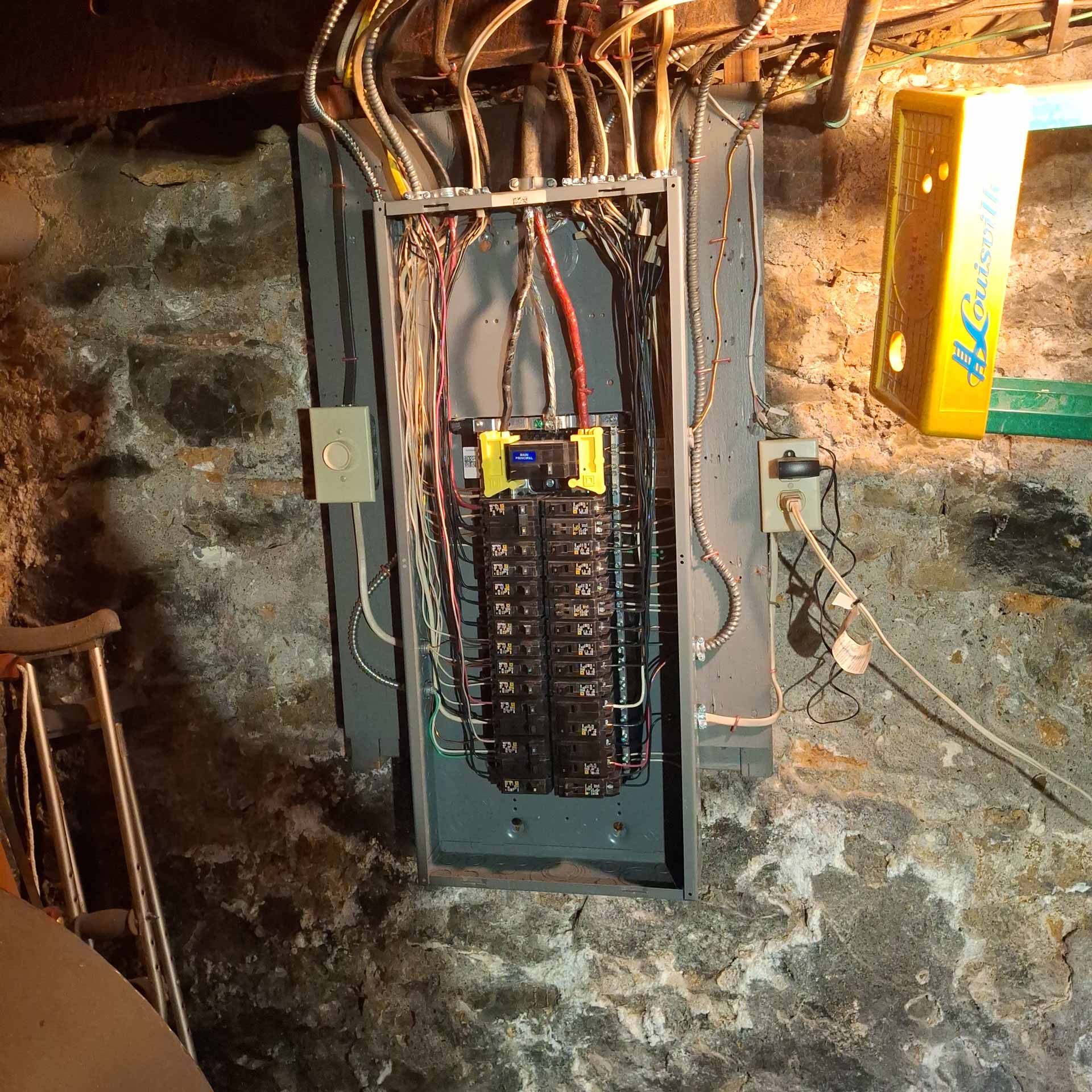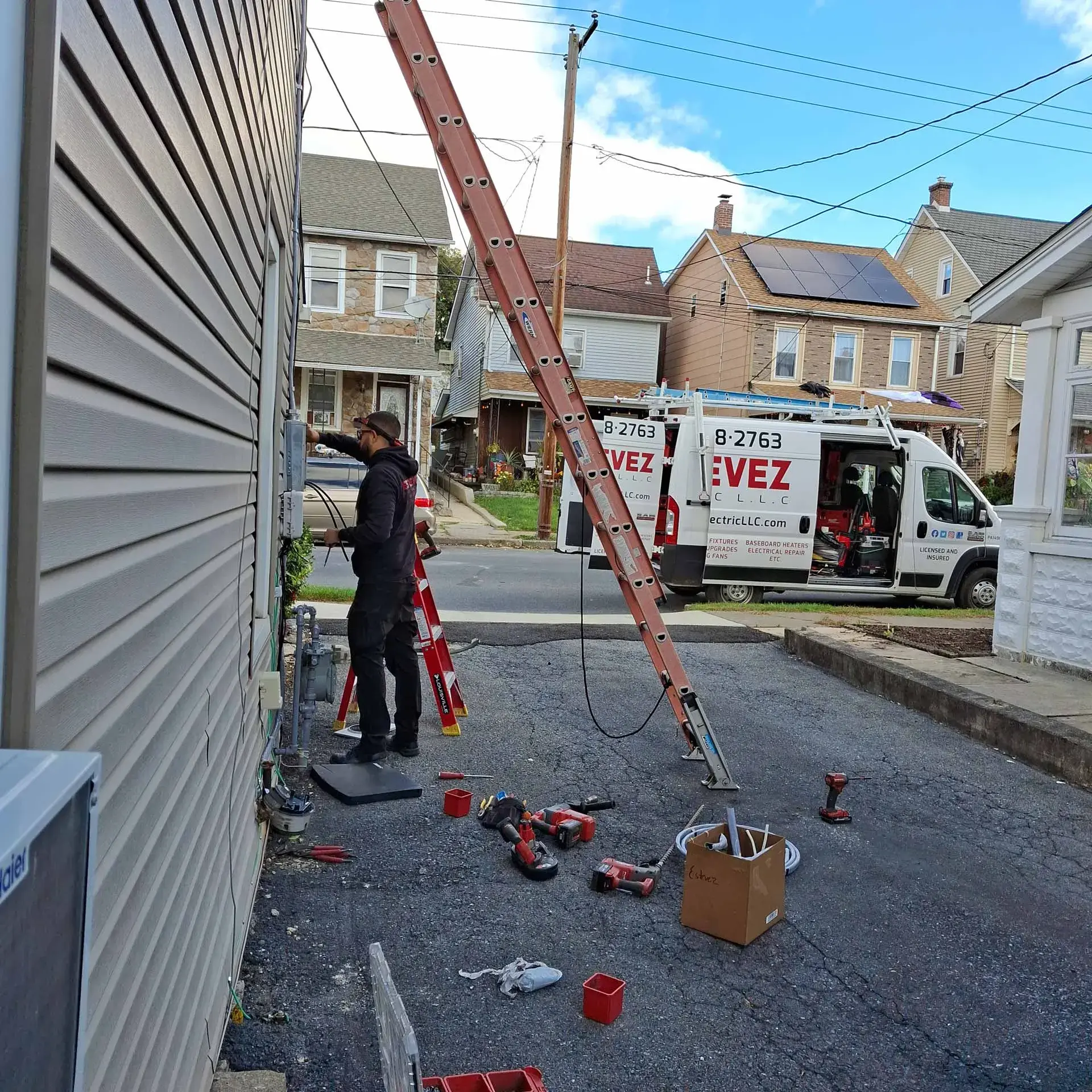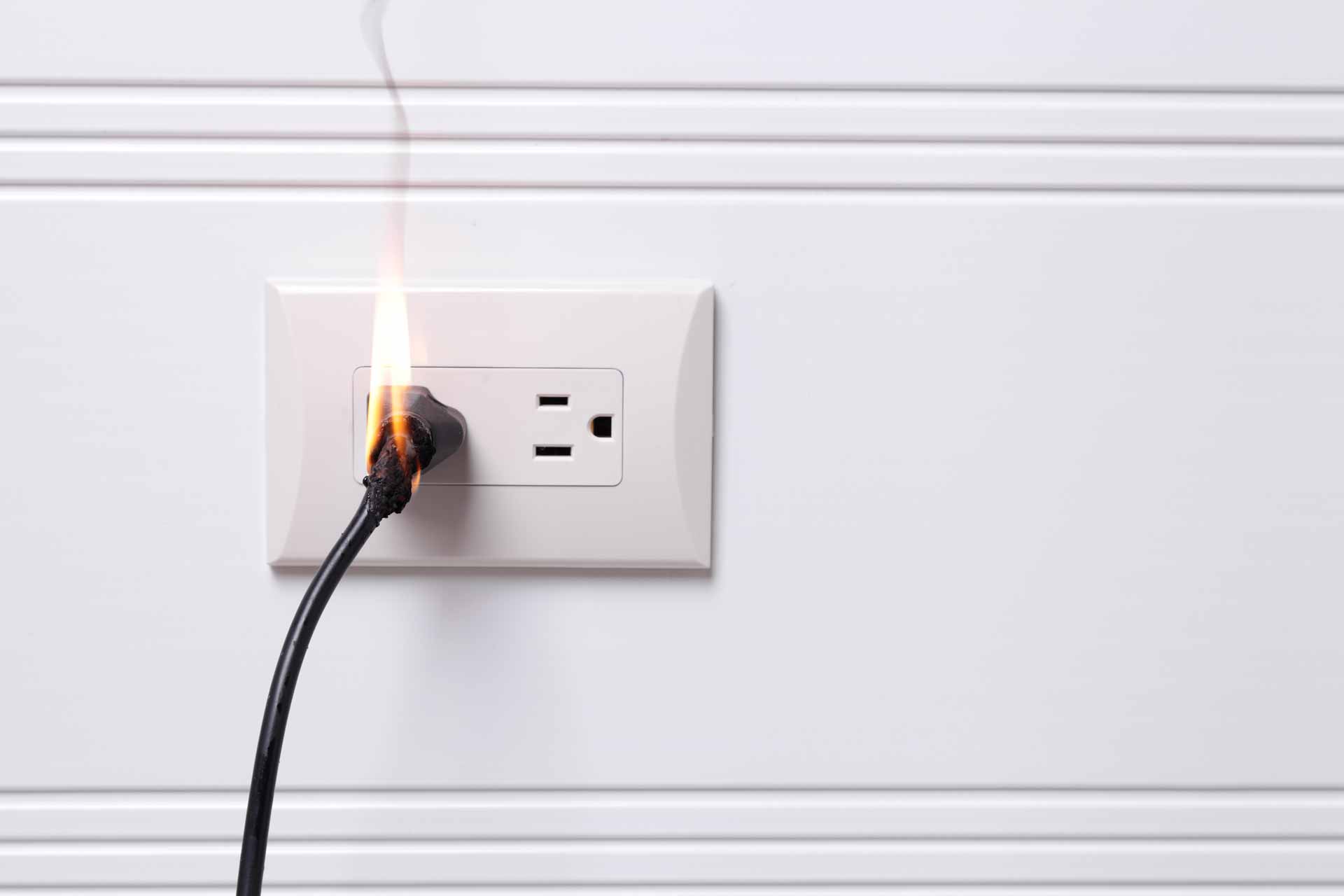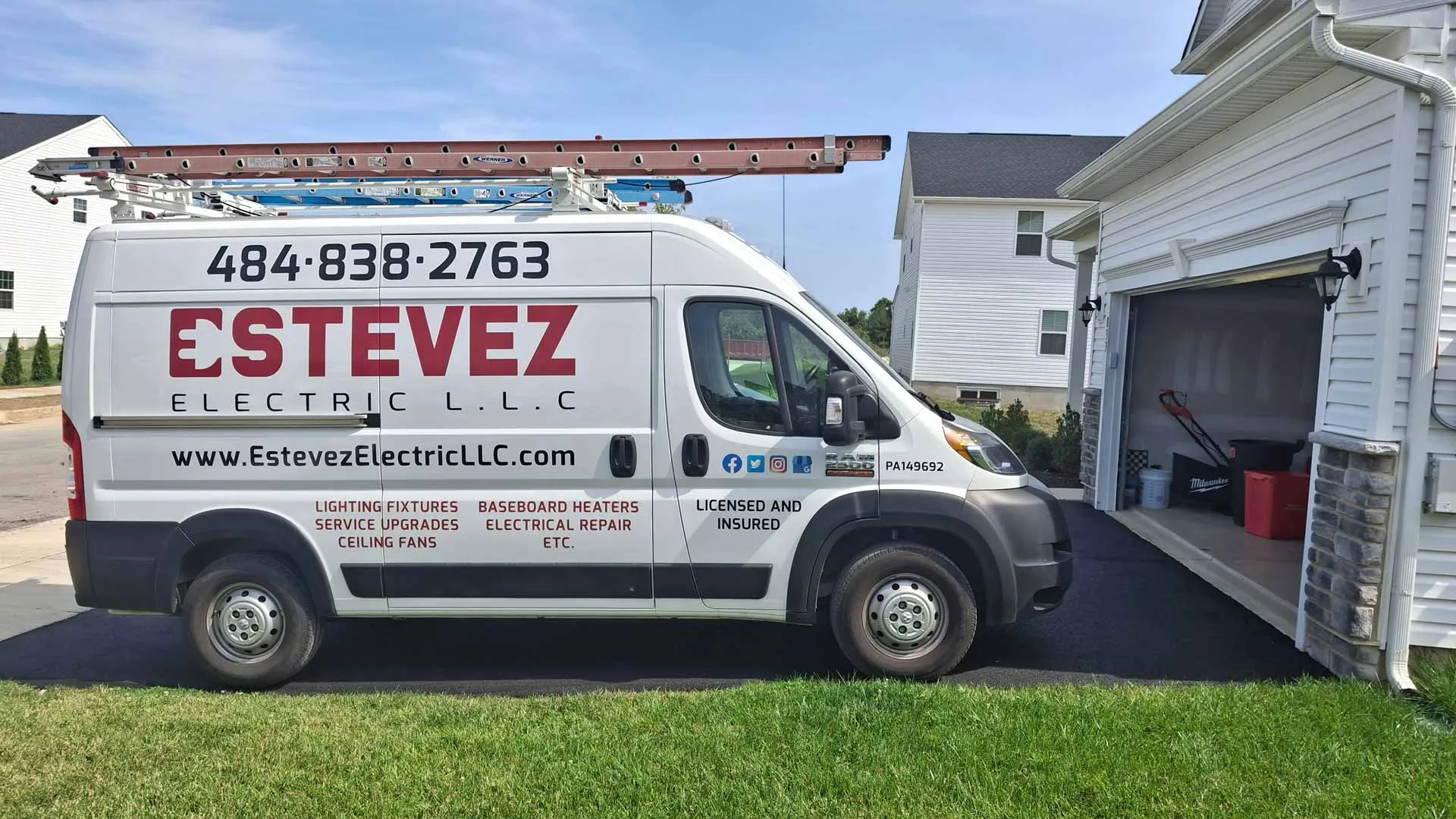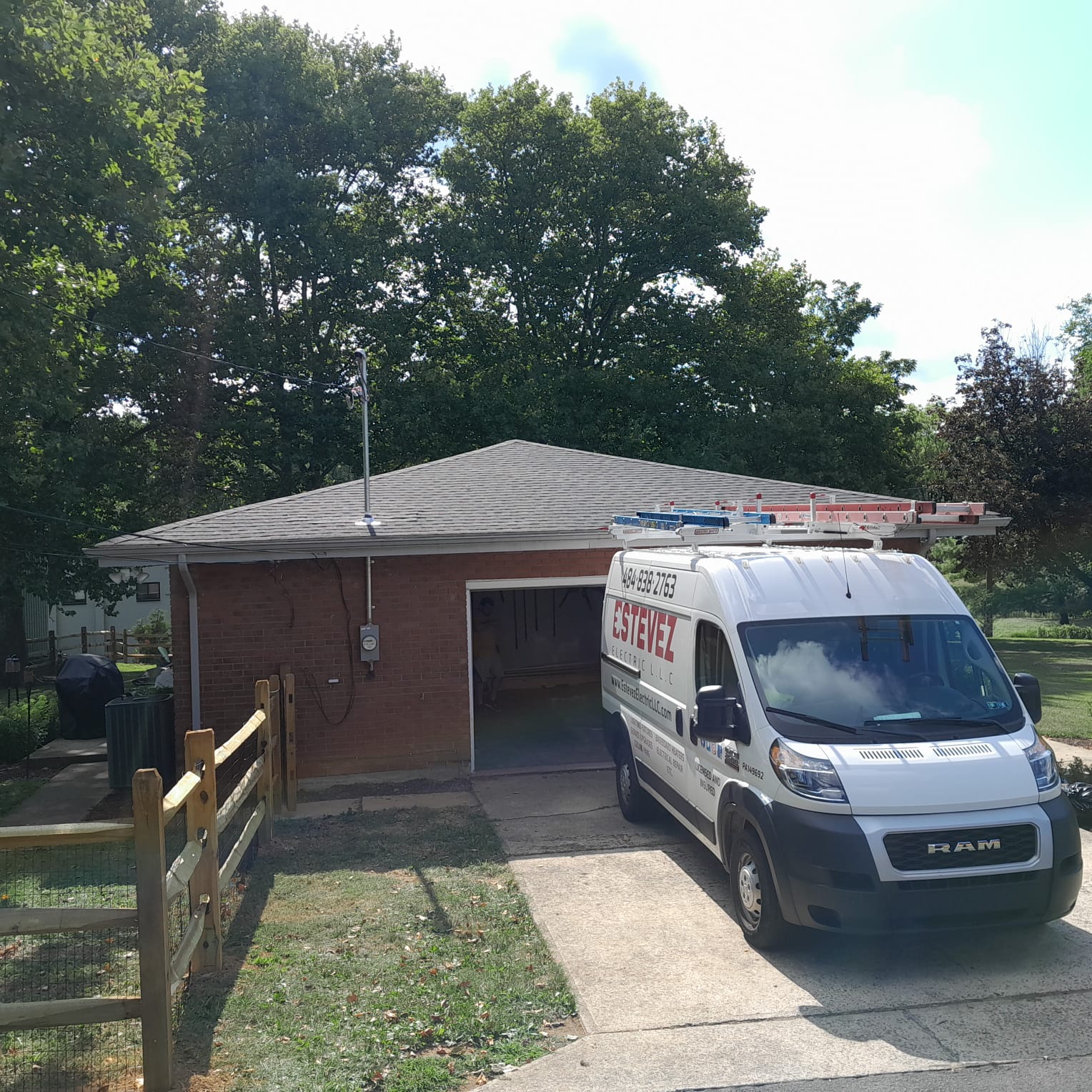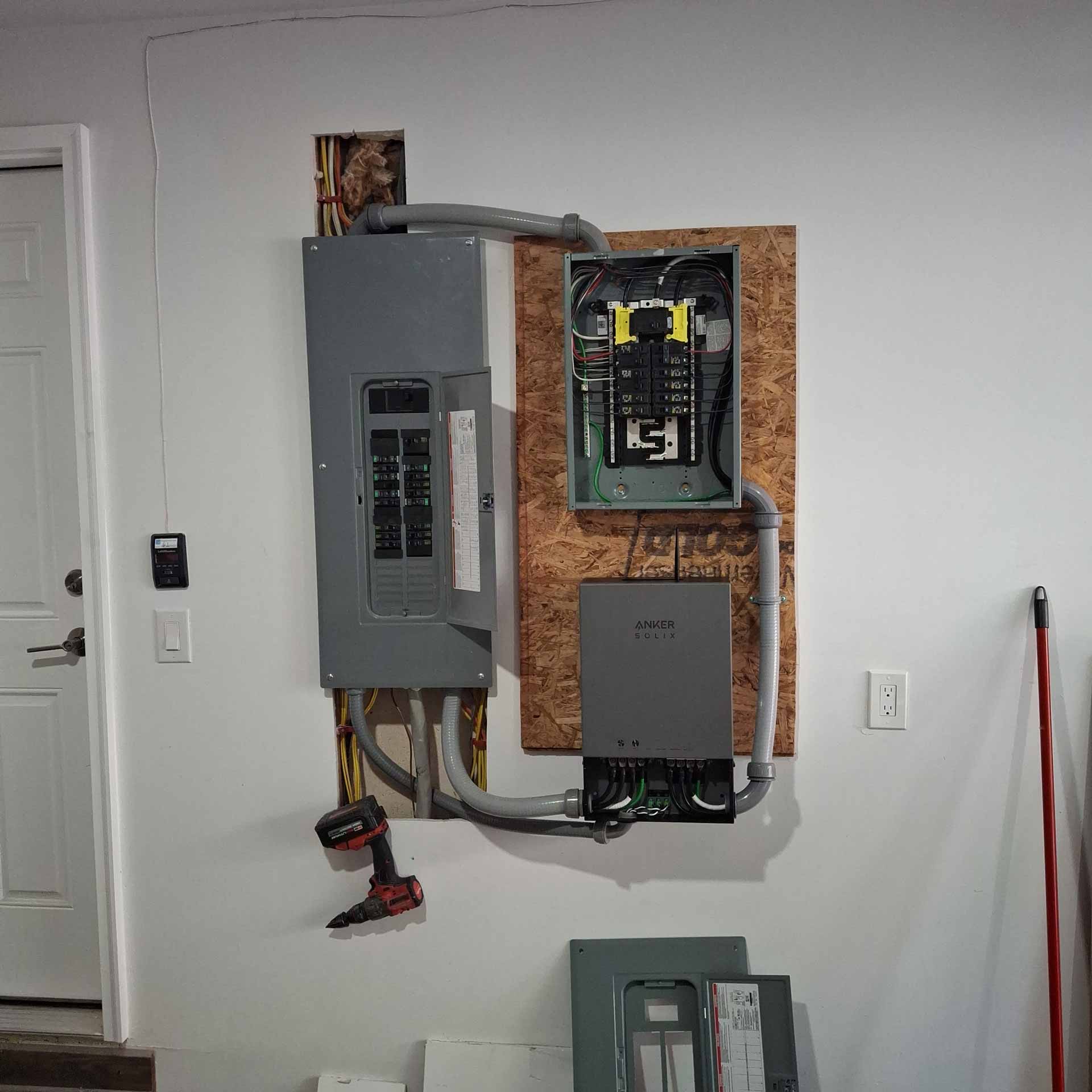Electrical panel codes are safety guidelines that govern the installation, maintenance, and operation of electrical panels in homes and businesses. These codes make sure electrical systems work safely and efficiently, protecting people and property from potential dangers. Understanding these regulations is important whether you’re planning a panel upgrade, fixing electrical problems, or checking if your home meets current safety standards. Following these codes isn’t just required by law—it’s a basic part of being a responsible property owner that affects the safety of everyone in your building.
Key Takeaways
- The National Electrical Code (NEC) forms the foundation for electrical panel regulations and is updated every three years
- Modern homes typically require a minimum 100-amp service, though 200-amp has become the standard for new construction
- Panels must have a clear working space of 30 inches wide, 36 inches deep, and 6.5 feet of headroom
- Outdated panel types like Federal Pacific, Zinsco, and fuse boxes pose serious safety risks and require replacement
- GFCI and AFCI protection are required in specific locations to prevent shock and fire hazards
- Panel upgrades typically cost $1,500-$4,000 but offer significant safety benefits and potential insurance savings
- All electrical panel work requires permits and professional installation to ensure code compliance
At their core, electrical panel codes are designed to prevent electrical fires, shocks, and other hazards by setting minimum safety requirements. These codes change regularly to include new technologies, address safety issues, and improve electrical system reliability. Let’s look at the important parts of electrical panel codes and what you need to know to keep your electrical system safe and up to code. By learning about these regulations, you can make smart decisions about your electrical system and talk more effectively with professionals when you need service.
The Regulatory Framework for Electrical Panels
Electrical panel codes in the United States are mainly based on the National Electrical Code (NEC), also called NFPA 70. This big set of guidelines is published by the National Fire Protection Association and updated every three years to include new safety measures and technological improvements. The most recent edition came out in 2023, with the next update expected in 2026. The NEC has over 800 pages of detailed requirements covering every aspect of electrical installations, making it the most complete electrical safety standard in the world and the main reference for electricians, inspectors, and engineers across the country.
While the NEC provides the foundation for electrical standards nationwide, it’s important to understand that local areas often adopt these codes with their own changes. This means that electrical requirements in Northampton, PA might be a little different from those in other places. Local building departments can enforce extra requirements based on regional issues like weather conditions, soil type, or past problems. Some cities may use older versions of the NEC, while others might have stricter standards because of local conditions or past incidents. Before starting any electrical project, you should check with your local building department or a licensed electrician who knows your area’s specific code requirements.
Beyond the NEC and local changes, electrical panels must also meet Underwriters Laboratories (UL) standards, especially UL 67 for panelboards. These standards make sure that electrical equipment has been tested and certified for safety under normal and unusual conditions. Also, the Occupational Safety and Health Administration (OSHA) has regulations for electrical safety in workplaces, which can affect commercial and industrial panel installations. This layered regulatory system creates a complete safety net that protects property and lives from electrical hazards.
Essential Panel Code Requirements
Electrical codes specify several important requirements for panel installation and maintenance. One of the most critical aspects is panel location and accessibility. According to the NEC, electrical panels must have a clear working space of at least 30 inches wide and 36 inches deep in front of the panel, with a minimum headroom clearance of 6.5 feet. Panels can’t be installed in bathrooms, closets, or near flammable materials, and they must be easy to access for maintenance and emergencies. These clearance requirements ensure that electricians can safely reach the panel during emergencies and routine maintenance without obstacles. Also, panels must be installed in dry locations protected from physical damage and extreme temperatures, with dedicated lighting recommended for panel areas in commercial and industrial settings.
Circuit protection requirements are another vital part of electrical codes. Modern panels must include Ground Fault Circuit Interrupter (GFCI) protection for circuits in wet locations like bathrooms, kitchens, and outdoor areas. Arc Fault Circuit Interrupter (AFCI) protection is required for most living spaces to prevent dangerous arc faults that can cause fires. Also, proper grounding and bonding standards ensure that electricity has a safe path to ground if there’s a fault, preventing shock hazards and equipment damage. The NEC has expanded these protection requirements in recent editions, now requiring GFCI protection in areas like laundry rooms and basements, and combination AFCI/GFCI protection in certain locations. These special circuit breakers can detect unusual conditions that standard breakers can’t, greatly reducing the risk of electrical fires and shock injuries.
Labeling and documentation requirements are often overlooked but very important aspects of electrical panel codes. The NEC requires that each circuit breaker be clearly labeled to identify the equipment or area it serves. This circuit directory must be accurate, readable, and permanently attached to the panel. For panels with multiple disconnects, each must be individually marked, and service equipment must be clearly identified as such. These labeling requirements ensure that circuits can be quickly identified and isolated during emergencies, maintenance, or troubleshooting, potentially saving crucial minutes during a fire or other dangerous situation.
Panel Capacity and Sizing Requirements
Figuring out the right panel size is a crucial part of electrical code compliance. For most modern homes, a minimum 100-amp service is required, though 200-amp service has become the standard for new construction and renovations. The NEC provides guidelines for calculating the necessary panel capacity based on the home’s square footage, number and type of appliances, heating and cooling systems, and potential future additions. This calculation involves determining the general lighting load (3 watts per square foot for most living spaces), adding specific appliance loads, and applying demand factors to account for the fact that not all circuits will operate at maximum capacity at the same time. For homes with electric heating, hot tubs, electric vehicle chargers, or workshops with power tools, a larger 300 or 400-amp service may be necessary to safely handle the increased electrical demand.
Circuit breaker requirements within the panel are equally important. Breakers must be properly rated for the wire size and expected load, and the total amperage of all breakers should not exceed the panel’s rating. Modern codes also require specialized breakers for certain applications, such as GFCI breakers for wet locations and AFCI breakers for bedrooms and living areas. When planning a 200-amp service upgrade, it’s essential to ensure all circuit breakers meet these requirements and are properly matched to their intended circuits. The NEC also limits the number of circuit breakers in a single panel based on its design and rating, which may require installing subpanels for larger homes or those with extensive electrical needs. Additionally, panels must include a main disconnect that can shut off all power to the building in a single motion, providing critical safety functionality during emergencies.
Bus bar ratings and design specifications are another critical but often overlooked aspect of panel capacity requirements. The bus bars—the metal strips inside the panel that distribute electricity to individual circuit breakers—must be properly rated for the anticipated load. Older panels may have bus bars rated for less amperage than the main breaker, creating a dangerous mismatch that can lead to overheating and potential fires. Modern code-compliant panels feature bus bars rated for at least the full capacity of the main breaker, with design features that ensure secure connections and proper heat dissipation. Additionally, panels must have adequate space for future expansion, typically reserving at least 20% capacity for additional circuits that may be needed as electrical demands change.
Common Code Violations and Safety Concerns
Several types of electrical panels installed in previous decades have been identified as serious safety hazards and no longer meet code requirements. These include Federal Pacific Electric panels with Stab-Lok breakers, which have a high failure rate; Zinsco or GTE-Sylvania panels, which can melt and fail to trip properly; Pushmatic panels, which become unreliable with age; and old fuse boxes, which generally lack adequate capacity for modern homes. If your home has one of these panel types, it’s not just a code violation—it’s a significant safety concern that should be addressed promptly by an emergency electrician. The Federal Pacific Electric panels are particularly notorious, with studies suggesting they fail to trip during overloads or short circuits up to 80% of the time, greatly increasing fire risk. Similarly, Zinsco panels may appear to work normally while actually allowing dangerous amounts of electricity to flow through even after the breaker has tripped, creating hidden hazards that can lead to catastrophic failures.
Improper modifications and DIY electrical work often lead to code violations and safety hazards. Common issues include double-tapped breakers (two wires on a single breaker terminal), oversized breakers for the wire gauge, mixed wire types, and missing panel directory labels. These violations create serious safety risks and typically require professional correction. Additionally, overloaded circuits and panels are both code violations and safety hazards, often indicated by frequent circuit breaker trips, warm panel covers, buzzing sounds, or dimming lights when appliances turn on. Amateur electrical work frequently violates code requirements for wire connections, proper grounding, and appropriate use of materials. For example, aluminum wiring, common in homes built between 1965 and 1973, requires special handling and connection methods that DIYers often overlook, creating significant fire hazards at connection points that deteriorate over time.
Water intrusion and environmental damage represent another category of serious code violations that compromise electrical panel safety. Panels exposed to moisture may develop corrosion on bus bars and breaker connections, leading to increased resistance, overheating, and potential electrical fires. Signs of water damage include rust on the panel cover or internal components, white mineral deposits, or visible water stains. Code requirements specify that panels must be installed in dry locations protected from environmental hazards, with appropriate sealing measures for outdoor installations. Additionally, panels installed in flood-prone areas must meet special height requirements to prevent water damage during flooding events. If your panel shows signs of water exposure or is installed in a location vulnerable to moisture, professional evaluation is necessary to ensure continued safe operation and code compliance.
The Panel Upgrade Process and Code Compliance
Ensuring code compliance during a panel upgrade begins with a thorough assessment of your current electrical system and future needs. This includes evaluating your existing panel for code violations and safety issues, calculating the appropriate panel size, and checking for any local code amendments that may apply. A professional electrician will develop a comprehensive upgrade plan that addresses all code requirements while meeting your specific electrical needs. This assessment typically involves a detailed load calculation that accounts for all existing circuits and appliances, plus anticipated future additions such as electric vehicle chargers, home additions, or new high-demand appliances. The electrician will also evaluate your service entrance conductors, meter base, and grounding system to ensure all components of your electrical service meet current code requirements. This comprehensive approach prevents the common mistake of simply replacing the panel without addressing other outdated or non-compliant aspects of the electrical system.
Electrical panel upgrades require permits in most places, which is a critical part of code compliance. The permitting process typically involves submitting detailed plans to the local building department, obtaining necessary electrical permits, following all code requirements during installation, and scheduling inspections at appropriate stages. Working with licensed professionals ensures this process goes smoothly and that all work meets or exceeds code standards, providing peace of mind and legal protection for homeowners. The inspection process generally includes verification of proper grounding and bonding, appropriate wire sizing and connections, correct breaker installations, and adequate workspace clearances. Failed inspections can result in costly rework, delays, and potential safety issues, making professional installation particularly important for complex projects like panel upgrades. Additionally, unpermitted electrical work can create legal complications when selling your home, as many places require disclosure of such work and may require retroactive permitting or even removal and replacement of non-compliant installations.
The panel upgrade installation process itself must follow numerous code requirements for safety and reliability. This includes proper mounting of the panel at the correct height, installation of appropriate service entrance conductors, proper tightening of all electrical connections to manufacturer specifications, and correct implementation of grounding and bonding systems. Modern code requirements also mandate surge protection devices for all service entrances, proper labeling of all circuits, and specific clearances around the panel location. The installation process typically requires power interruption for 4-8 hours, coordination with the utility company for meter disconnection and reconnection, and final testing of all circuits before the system is returned to service. Professional electricians follow established safety protocols throughout this process to protect both themselves and the property from potential hazards during the transition.
Special Considerations for Panel Upgrades
Modern electrical codes increasingly emphasize the importance of surge protection. While not always required, whole-house surge protection is highly recommended and may be required in some places. These systems protect your entire electrical system and connected devices from power surges caused by lightning strikes or utility issues. Professional surge protector installation provides an additional layer of protection beyond what standard circuit breakers offer, helping to prevent damage to sensitive electronics and appliances. The 2020 NEC edition made a significant change by requiring surge protection devices (SPDs) at all service entrances in new construction, recognizing the increasing presence of sensitive electronic equipment in modern homes. These whole-house surge protectors are typically installed directly in or adjacent to the main electrical panel and work by diverting excess voltage safely to ground during surge events. Unlike plug-in surge protectors, whole-house systems protect all circuits at once and can handle much larger surges without needing replacement after each event.
For homes with backup generators, proper integration with the electrical panel is essential for both functionality and code compliance. The NEC has specific requirements for transfer switches that prevent back-feeding of power to utility lines during outages. These include proper sizing of transfer switches for the electrical load, correct installation of interlocks, appropriate labeling of generator-powered circuits, and adherence to clearance and accessibility requirements. Proper generator installation ensures that your backup power system operates safely and effectively during outages. The code requirements for generator systems have changed significantly in recent years, with particular emphasis on preventing dangerous back-feeding that could injure utility workers. Modern transfer switches must include mechanical or electrical interlocks that physically prevent simultaneous connection to both utility power and generator power. Additionally, generator systems must include appropriate grounding systems, overcurrent protection, and disconnecting means that allow for safe maintenance and operation.
Smart panel technology presents both opportunities and challenges for code compliance in modern electrical systems. These advanced panels incorporate digital monitoring capabilities, remote circuit control, and energy management features that weren’t considered when many electrical codes were developed. While the NEC has begun addressing these technologies in recent editions, local code interpretations may vary regarding their implementation. Smart panels must still meet all traditional safety requirements while incorporating appropriate cybersecurity measures to prevent unauthorized access to critical home systems. Additionally, backup power considerations become more complex with smart panels, as many require continuous power to maintain monitoring and control capabilities. When planning a panel upgrade that includes smart technology, it’s essential to work with professionals familiar with both traditional code requirements and the specific considerations these advanced systems entail.
The Cost-Benefit Analysis of Code-Compliant Panel Upgrades
Upgrading an electrical panel to meet current code requirements is a big investment in your property. Panel upgrades typically cost between $1,500 and $4,000, depending on the size of the panel and how complex the installation is. While this may seem like a lot, it’s important to think about the long-term benefits, including better safety, higher property value, possibly lower insurance premiums, and the ability to add new appliances and technologies. Most homeowners get their money back through increased home value and avoided repair costs. The complexity of your specific situation can really affect costs—things like needing to replace service entrance conductors, upgrade the meter base, do extensive rewiring, or work in hard-to-reach locations can push prices toward the higher end of the range. However, even at the upper end of the cost range, panel upgrades typically deliver a return on investment of 50-85% in terms of increased home value, making them one of the more financially sound electrical improvements available.
Many insurance companies have become stricter about electrical systems that don’t meet current codes. Some policies may charge higher premiums for outdated electrical systems, not cover fires caused by non-compliant electrical panels, or require proof of professional installation. When thinking about the cost of a panel upgrade, it’s worth contacting your insurance provider to understand how code compliance affects your coverage and rates. A cost-benefit analysis can help determine if an upgrade makes financial sense for your situation. Some insurance companies offer discounts of 5-20% for homes with updated electrical systems that meet current codes, potentially saving hundreds of dollars each year on premium costs. Additionally, homes with outdated panels like Federal Pacific or Zinsco may face coverage limitations or even policy cancellation as insurers become more aware of the associated risks. In some cases, the insurance savings alone can offset a significant portion of the upgrade cost over the life of the system.
Beyond the immediate financial considerations, code-compliant panel upgrades offer substantial quality-of-life benefits that should factor into any cost-benefit analysis. These include the ability to add new circuits for home offices, entertainment systems, or outdoor living spaces without overloading the system; fewer nuisance trips that interrupt daily activities; elimination of flickering lights and inconsistent power delivery that can damage sensitive electronics; and the peace of mind that comes from knowing your electrical system meets modern safety standards. For homeowners planning to stay in their homes as they age, electrical upgrades that accommodate medical equipment, accessibility modifications, or smart home technologies can be particularly valuable. Similarly, families with young children benefit from the enhanced protection offered by modern GFCI and AFCI technologies, which significantly reduce the risk of electrical injuries and fires.
Conclusion
Understanding electrical panel codes is essential for maintaining a safe and efficient electrical system in your home or business. These codes represent decades of safety research and real-world experience aimed at preventing electrical hazards. From panel location requirements to circuit protection standards, each aspect of these regulations contributes to the overall safety and functionality of your electrical system. The evolution of these codes reflects our growing understanding of electrical risks and the development of technologies designed to reduce them. By learning about these requirements, you become a more informed consumer capable of making better decisions about your property’s electrical infrastructure.
If you’re worried about your electrical panel’s code compliance or are experiencing issues like frequent breaker trips or flickering lights, it’s important to consult with a licensed electrician. Professional electrical contractors can perform a thorough inspection, identify any code violations or safety concerns, and recommend appropriate upgrades or repairs. Remember that electrical work should always be done by licensed professionals, as DIY electrical projects not only risk code violations but can create serious safety hazards for you and your family. Licensed electricians bring not only technical skills but also up-to-date knowledge of code requirements and safety practices that protect both your property and the people who live or work in it.
By ensuring your electrical panel meets current code requirements, you’re not just following regulations—you’re investing in the safety, reliability, and value of your property for years to come. A code-compliant electrical system provides the foundation for all the modern conveniences and technologies we rely on daily while reducing the risk of electrical fires, shocks, and other hazards. As electrical demands continue to increase with new technologies and appliances, maintaining a properly sized, modern panel becomes increasingly important. Whether you’re planning a major renovation, addressing safety concerns, or simply preparing your home for future needs, understanding and following electrical panel codes is a fundamental part of responsible property ownership.




